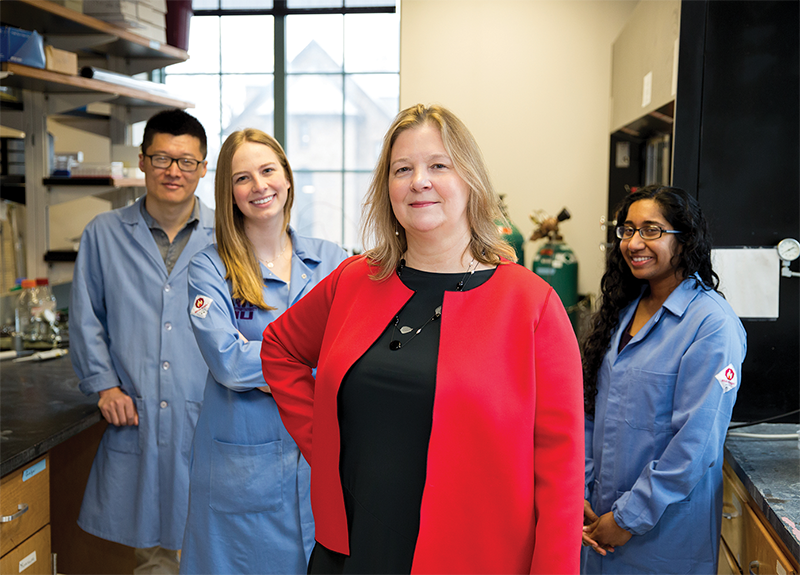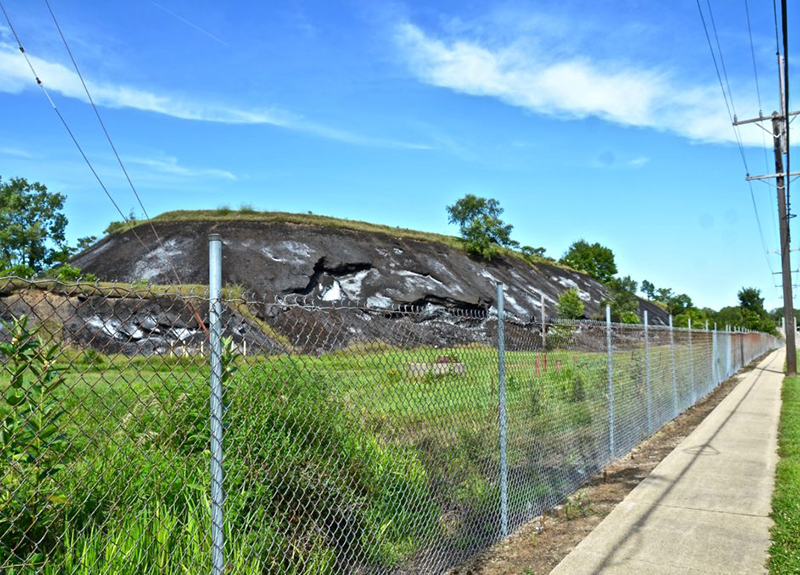Environmental nanoscientist explores how new materials may change the world
Article originally published by Northwestern's Office for Research.
For better or worse Earth is home to trillions of renewable energy users. But there’s a big difference between driving a hybrid car and relying on the sun as one’s sole source of power — as does the planet’s plant life. That hasn’t stopped researchers from trying to make the connection.
“Engineers have long attempted to replicate nature’s use of renewables,” says Kimberly Gray, chair of civil and environmental engineering and an expert on photoactive nanomaterials designed to harvest light and convert it to energy. “When it comes to photosynthesis, plants do it much better than we can, but at much lower efficiencies.”
The development of better technology is one of the great challenges for engineers like Gray. While a tree may convert about 1 percent of the sunlight it receives, the endgame for researchers is to be able to harness at least 50 percent of the sun’s potential power.
“Humans — engineers included — want things to function at peak performance all of the time, and we have great difficulty with cycles like seasons,” says Gray. “We also have a habit of using things once or twice and throwing them away.”
Nature, on the other hand, operates in a loop, a concept Gray would like to see urban centers better implement. Plants harvest sunlight and make sugar, sustaining animals that consume them and enriching soil with their debris.
In cities, nearly every input — energy, food, water, and materials — creates a linear output of waste.
“What we want to do is reduce the inputs and the outputs, a process that requires coupled systems more like what we see in nature,” says Gray, who has developed a sustainable urban concept known as the Living City. “We have to be able to increase our urban metabolism and develop better ways to recover, recycle, and reuse materials.”
More than 50 years ago, Curitiba, Brazil, was able to do just that, and in many ways — public transportation, use of green space, recycling — the city remains a gold standard for sustainable planning.
When Gray first pitched her Living City vision to the Asia Pacific Economic Cooperation in 2012, she cited Curitiba and the Beddington Zero Energy Development in London, the United Kingdom's first large-scale, mixed use sustainable community, as case studies.
But urban areas — expected to house more than 6 billion people by 2045, according to the United Nations — are more likely to be redesigned than built from scratch.
As buildings are razed and rebuilt, new construction provides near-constant opportunity to become more sustainable. Consider New York, whose high-rise buildings came under severe flood threat when Hurricane Sandy stuck in 2012.
“There are two main ideas to preventing future flooding in Manhattan: Engineers can either design an armored structure to keep water out, or use ecological methods in an attempt to make the city more resilient to the effects of climate change,” says Gray, a member of the American Chemical Society and Association of Environmental Engineering and Science Professors. “The forward-thinking concept of the ‘living city’ allows for immensely more adaptation in the future.”
Adapting, however, is something Gray believes Americans struggle with. That means scientists are tasked with reducing wasteful consumption without reducing the standard of living.
“We already have technology — things like zoned heating and automatic lighting — to use much less energy, but changing human behavior takes time,” she says. “We can develop the most efficient solar array possible, but if people don’t use it, what good will it do?”
As an environmental nanoscientist, Gray pushes the boundaries of new photoactive materials, but also remains keenly aware of their potential consequences.
“As large populations start using more and more of these nanomaterials, we have to learn everything we can about their unintended effects,” says Gray, director of the newly formed Center for Resilient Communities. “What might happen when a particle used to convert light to chemical energy ends up in a park or river?”
Gray studies this phenomenon not with regard to humans or animals, but bacteria.“Bacteria are the foundation of food webs and they provide ecological goods and services that we are completely reliant upon for life,” she says.
Already, her lab has shown that certain nanomaterials when combined or placed under environmental conditions — like exposure to light — tend to have deleterious effects on bacteria that are critical for homeostasis.
“One of the best things about being at a university is that we have an opportunity to think in a more integrative fashion because we don’t have to concentrate solely on commercial potential,” says Gray. “What we’re here to do is generate new ideas, meaning we can slow down and better weigh the risks of a new technology against the benefits of living more sustainably.”




